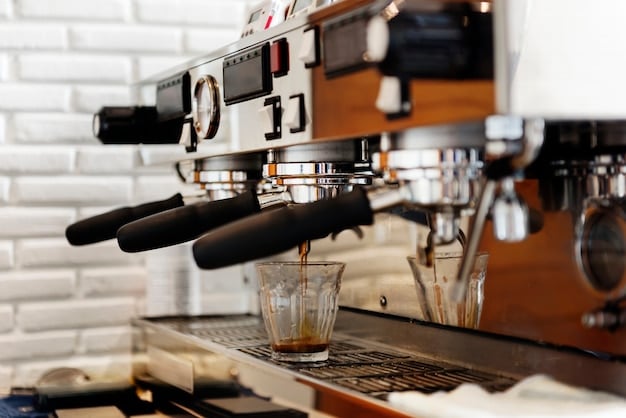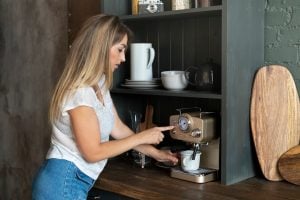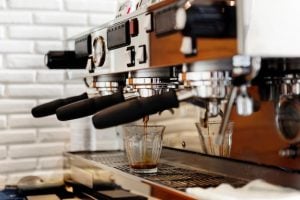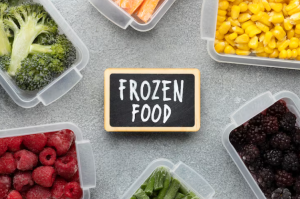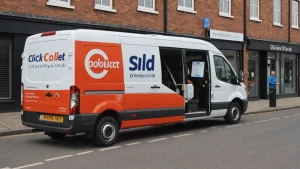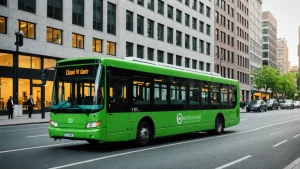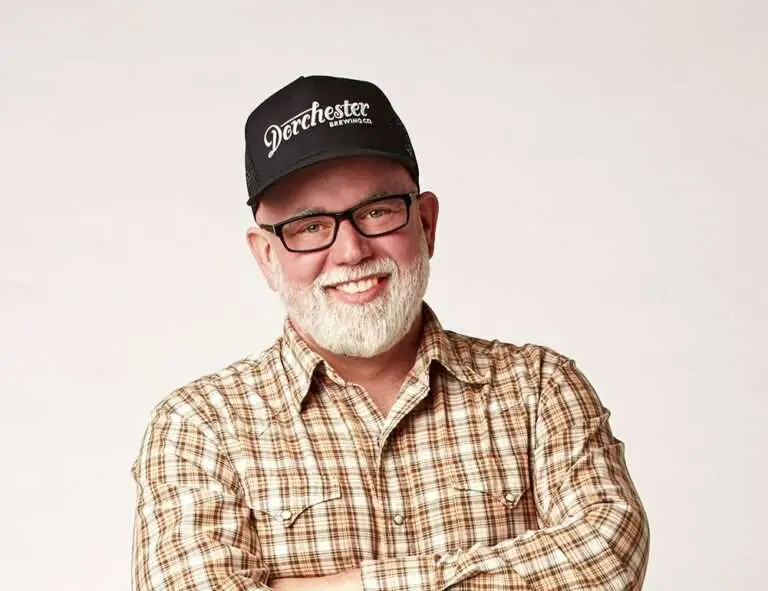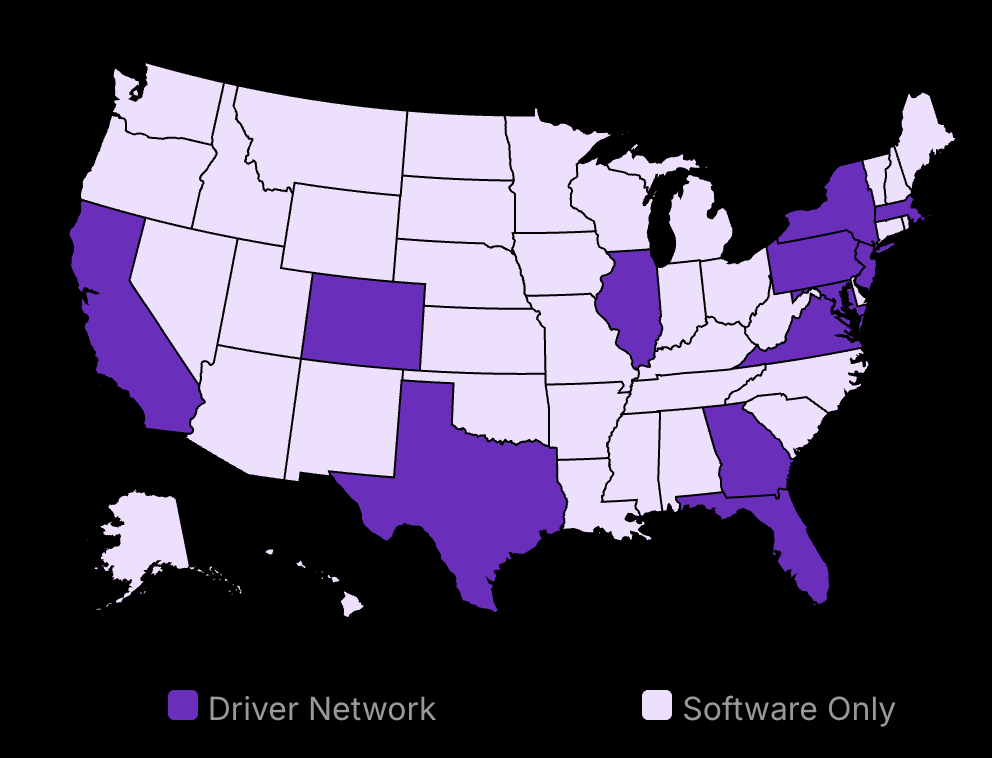The difference between a good café and a great one often comes down to what’s behind the counter. In 2025, running a successful coffee shop isn’t just about beans and baristas—it’s about having coffee bar equipment that delivers consistency, efficiency, and exceptional quality with every cup.
Café owners investing thousands in premium coffee beans, hiring skilled baristas, creating Instagram-worthy spaces—only to fall short because their equipment couldn’t keep up. One café owner told me last month, “I thought I could save on coffee bar equipment and make up for it with great service. Three months in, we were losing customers because we couldn’t maintain quality during rush hours.”
The stakes are high. Your equipment choices are as critical as your coffee selection.
But here’s what most café guides won’t tell you: The “must-have” equipment list changes constantly. What worked in 2023 won’t necessarily work today.
So what exactly do you need in 2025? Which espresso machines are worth the investment? Should you prioritize grinders or milk frothers? What new brewing technologies are changing the game? Understanding the different types of espresso machines available is crucial for making an informed purchase. Whether you’re considering traditional lever machines, semi-automatic, automatic, or super-automatic models, each type offers unique benefits catering to different operational needs and skill levels. For a comprehensive overview, explore our detailed guide on various espresso machine categories that could elevate your coffee bar’s performance and finesse.
In this complete guide to coffee bar equipment, I’ll walk you through everything you need—from essential espresso machines to the latest brewing innovations—to build a café that not only survives but thrives in 2025’s competitive landscape.
Coffee quality waits for no one. Let’s make sure you’re equipped for success.

Boost customer satisfaction with just a few clicks
Most-Loved Features:
- On-demand drivers
- Real-time GPS tracking
- Delivery confirmation photos
- Over 50% of customers report a smoother delivery experience
Essential Commercial Espresso Machine Choices for Cafés
Energy-efficient machines save money over time.
Consistent temperature control improves coffee quality.
Most popular machines have two or three heads for efficiency.
Evaluating Espresso Machine Features
Evaluating espresso machine features means looking at several key aspects. The number of heads is crucial for volume needs. For high-volume cafés, dual or triple group machines can handle busy periods efficiently. This capacity ensures your baristas can serve multiple customers quickly without compromising quality. Most cafés prefer three-group machines for their balance of cost and capacity.
Another important feature is the ease of cleaning and maintenance. Staying on top of cleaning prolongs the life of the machine and keeps drinks tasting great. For example, the Synesso MVP Hydra’s automatic cleaning cycle is a big time-saver, ensuring regular maintenance even during busy days.
Maintenance Frequency For Efficiency: Regular maintenance, including descaling and checking for leaks, should be performed every 1-3 months to ensure energy efficiency in espresso machines.
Energy efficiency is becoming essential in café equipment. ENERGY STAR-certified brewers are increasingly popular as operating costs rise. Besides saving electricity, this choice also aligns with current eco-friendly trends in the coffee industry. Machines with PID temperature control systems offer consistent heat, which is key for quality espresso shots. Consistency keeps regular customers happy and limits waste, making it important for long-term operation.
Eco Mode Energy Savings: Implementing eco-mode settings on coffee machines can save up to 20% in energy consumption during idle periods.
Top Picks for 2025, Including La Marzocco
In 2025, the top espresso machines blend innovation and reliability. The La Marzocco Linea PB stands out. Known for excellent temperature stability and energy efficiency, it uses integrated scales for precise dosing. It is no surprise that James Hoffmann still recommends it to high-volume cafés for its reliability and consistency. However, its high price can be a hurdle for smaller operations.
The Victoria Arduino Eagle One is another favorite. It boasts advanced energy-saving technology and a customizable workflow. However, its numerous features mean there’s a learning curve. A standout feature is its AI-powered predictive maintenance, offering timely alerts that help prevent machine downtime. This model is ideal for tech-savvy coffee shops willing to invest in learning its systems.
Lastly, the Nuova Simonelli Aurelia Wave provides an ergonomic design and consistent shot quality. It incorporates T3 technology for temperature accuracy, but like others in its class, comes with a hefty price tag. Ric Rhinehart from the Specialty Coffee Association mentions its use of AI to optimize power consumption, which ensures it’s both forward-thinking and cost-effective.
In conclusion, selecting the right espresso machine involves understanding your café’s unique needs and matching them to machine features and capabilities. This thoughtful approach keeps each cup crafted to perfection, maintaining customer satisfaction and ensuring your café’s place at the forefront of coffee excellence in 2025. When choosing your coffee bar equipment, pairing your machine with the best coffee beans is equally vital. The quality and origin of your beans directly impact the flavor and overall customer experience. For those looking to elevate their brew, exploring the latest insights on the Finest Coffee Beans Available in 2025 can guide you to exceptional choices that complement your equipment perfectly.
Best Coffee Grinders for Professional Use
Burr grinders enhance taste through uniform grind size.
Ensure consistent flavor profile with top models.
New 2025 options offer innovative features.
Importance of the Right Grinder
Impact on Taste and Consistency
Grinding is essential to making a great cup of coffee. Consistency is key. This consistency ensures each cup tastes the same, providing a reliable experience for customers. Uniform particles release flavors steadily during extraction, improving balance.
Burr vs. Blade Grinders
Burr grinders crush coffee beans between two surfaces. This method allows for precise control over grind size. Uniform particles ensure even extraction during brewing, enhancing flavor. In contrast, blade grinders chop beans randomly, leading to uneven sizes. The result is inconsistent extraction and a muddled taste. Burr grinders are ideal for professional settings. Their ability to produce consistent grind sizes helps maintain a high-quality product.
“The grinder is critical in unlocking the flavor hidden within the beans. But what makes some grinders great and others less so? It comes down to relatively simple criteria: uniform particle size without excess heat or static.”
Choosing the right grinder depends on specific café needs. Factors include desired speed, grind size flexibility, and customer preferences. Books like “Craft Coffee: A Manual” by Jessica Easto are a great resource for those looking to deepen their understanding of the role grind size plays in coffee quality.
Grind Size Adjustments for Different Coffee Types
Different brew methods require different grind sizes for optimal extraction. For example, espresso demands a finer grind compared to French press, which works best with coarser particles. Adjusting grind size not only affects taste but also extraction efficiency. The wrong grind can lead to over or under-extraction, resulting in bitterness or sourness.
Boiler Insulation Savings: Insulating a coffee machine’s boiler can reduce its energy consumption by approximately 38%.
The detailed control offered by burr grinders enables baristas to tweak grind sizes to suit customer preferences. These adjustments can make all the difference in delivering a satisfying cup tailored to diverse tastes. Resources like the book “Coffee: A Comprehensive Guide to the Bean, the Beverage, and the Industry” can provide detailed insights into how grind size influences brewing methods.
Recommended Grinders
Top Professional Grinders
Several grinders stand out for cafés aiming for excellence:
Mahlkönig EK43S: Known for its powerful motor and consistent grind quality. This grinder is essential for high-volume environments where precision matters.
Nuova Simonelli Mythos II: Offers advanced technology for precise temperature and grind variability. Designed for specialty cafés seeking greater control over espresso extraction.
Baratza Forte BG: Offers commercial-grade qualities with precision settings. Ideal for coffee shops emphasizing versatility across different brew methods.
Price Points and Budget Considerations
While this investment may seem steep, the return in flavor and consistency justifies the cost. Consider grinders like the Fiorenzato F4 EVO for those seeking value without compromising extraction quality.
Newly Launched Models: 2025 Highlights
Innovative models released in 2025 highlight emerging trends and technologies:
Moccamaster KM5 Burr Grinder: Features 50mm flat steel burrs with stepless grind adjustment. Its design emphasizes ease of use and precision for multiple brew methods.
Baratza Sette 270Wi: Integrates a scale for precise dosing, ensuring each shot is perfectly calibrated for consistency.
Exploring these models can reveal new possibilities for improving café offerings. For more details, potential buyers can refer to sites like Baratza for comprehensive reviews.
Top Milk Frothers for Coffee Shops
Decide between manual and automatic frothers.
Explore new frother technologies.
Hear customer feedback and ratings.
Choosing the Right Frother or Steam Wand
Selecting the ideal milk frother for your coffee shop requires a balance between manual and automatic options. Manual frothers cost less and put you in control, while automatic ones save time and ensure consistency. For high-volume bars, automatic frothers can ease pressure on the staff. As an expert quipped, “Automatic milk frothers are more expensive than handheld frothers, but they’re also more convenient. You can set them to froth your milk for you, and they’ll shut off automatically when it’s done.” Temperature control is another critical feature. This range ensures that milk retains its sweetness and texture without scalding or remaining too cold.
Texture plays an important role in milk frothing. The ideal foam is creamy with fine bubbles. This results in quality lattes and cappuccinos. For shops aiming for high-quality presentation, the uniformity of bubbles impacts both texture and flavor. A professional noted, “The best frothers produce creamy velvety foam with tiny uniform bubbles – the kind that makes for a perfect latte or cappuccino.”
2025’s Best Frothers
In 2025, several top-tier frothers have emerged on the market. The Breville Milk Cafe Frother allows precise temperature settings and offers foam options for flat whites and cappuccinos. Meanwhile, the Instant MagicFroth Milk Frother stands out for its multiple foam and heat settings, appealing to those who want versatility without breaking the bank. The Latte Art Factory, known for its award-winning capabilities, utilizes patented airflow technology for consistency. This has earned it widespread praise for producing perfect foam, even with plant-based milks.
Customer feedback consistently praises these devices for their reliability and ease. The Latte Art Factory, for example, has garnered a strong reputation for the quality of foam it produces. Looking at new designs, frothers are becoming more advanced with enhanced temperature control and diverse frothing options. As coffee culture evolves, there might be greater emphasis on adaptive features that accommodate varying milk types and drinks. In such cases, it would be wise to stay updated on these developments for continuous improvement and customer satisfaction.
High-Quality Tools to Brew Coffee
Quality brewing tools help cafés make better coffee.
New gadgets are boosting brewing.
Tools bring precision and consistency to each brew.
Must-Have Barista Tools for Brewing
Achieving coffee excellence in a café starts with the right brewing tools. Pour-over setups lead the list. They include drippers like the Hario V60 and Chemex. These tools offer control over every step, from blooming the coffee to adjusting the water temperature. This method is popular because it lets baristas customize the brewing process, enhancing the coffee’s flavor profile. As one expert noted, “Pour-over coffee is the preferred brewing method for many, and it all starts with the taste” – Nigel Price. Baristas can craft an exceptional cup with manual precision.
Another important tool is the AeroPress. It offers a unique approach to brewing that is valued for its versatility and compactness. Cafés often use it for specialty coffees and to satisfy coffee purists who seek deeper flavors. On the other hand, the French press, also known as a cafetière, delivers a more robust and full-bodied cup. The French press’s ability to highlight body and mouthfeel makes it a staple. Both tools grant cafés the ability to cater to varied customer preferences while maintaining high quality.
Precision matters in coffee brewing, making scales and timers essential. Scales ensure the correct coffee-to-water ratio, crucial for consistency. A slight variation can alter taste and strength. Timers help track brewing time, preventing over-extraction or under-extraction. The combined use of scales and timers supports precision, enabling cafés to serve coffee as intended every time. This precision builds customer trust and satisfaction, showing that quality is at the heart of their service.
Latest Brewer Additions and Coffee Shop Accessories for 2025
2025 brings exciting innovations to coffee brewing technology. New gadgets are improving how coffee is brewed, offering cafés smarter solutions. For instance, specialized machines now allow for pre-programmed brewing profiles. These profiles simplify processes while ensuring the drink’s taste remains consistent. This improvement caters to both seasoned baristas and newcomers. It lets them achieve desired results without going through a steep learning curve.
Advancements in brewing tools include devices that automate water temperature adjustments. This ensures perfect heat during each stage of brewing. Such precision enhances flavor extraction, leading to a better cup of coffee. These gadgets also come with energy-saving features, addressing environmental concerns and reducing operating costs.
Integrating these new tools into existing setups can be seamless if approached methodically. Start by training staff on the functionalities of the tools. Highlighting benefits in a hands-on setting increases adoption. Another tip is to update brewing protocols to include these new tools, ensuring consistency across shifts. By embracing the latest brewer additions, cafés not only offer superior coffee but also position themselves as pioneers in the evolving coffee industry.
Navigating Trends and Shifts in Coffee Shop Machines
Businesses prioritize eco-friendly methods.
Gear adapts to changing customer tastes.
Stay updated and responsive to industry changes.
Sustainable Practices in 2025
Sustainability isn’t just a buzzword anymore. For cafés, it’s a guiding principle. By 2025, a move toward eco-friendly equipment is crucial. Cafés are reducing their carbon footprint with energy-efficient appliances. These appliances save money and cut down on waste. The switch to low-energy machines is not just environmentally sound but financially wise. Think of refrigeration and espresso machines that consume less power yet deliver optimal performance.
Machine Energy Usage Comparison: High-efficiency coffee machines consume about 50 kWh per year, while capsule machines consume below 40 kWh annually.
Beyond energy use, packaging and utensil choices matter too. Compostable packaging and encouraging customers to bring their own cups are small shifts with a big impact. Some cafés offer discounts for using reusable items—an incentive that can build customer loyalty while supporting sustainability. As rightly pointed out, embracing sustainability is no longer an option but an essential part of café operations.
Consumer Packaging Waste Concern: 40% of consumers want restaurants to focus on reducing packaging waste.
Reality shows that initial investments in eco-friendly gear often result in long-term savings on energy bills.
Adapting to Consumer Preferences
Consumer tastes are shifting quickly, fueled by trends and new diets. Cafés that adapt are thriving. There’s a growing demand for alternative milk options, not just almond or soy but also emerging choices like potato and pea milk. Specialized frothers that handle these diverse options are becoming necessary.
Healthy Options Demand Growth: 61% of consumers order more healthful options at restaurants than they did two years ago.
Unique brewing methods also keep customers coming back. Cold brew remains a favorite, and the popularity of nitro coffee has cafés investing in specialized equipment. This trend shows how unique offerings can distinguish a café in a crowded market. Successful adaptation isn’t about overhauling current practices but integrating fresh ideas and equipment smoothly.
Social Media Food Presentation Impact: 66% of consumers say that food presentation on social media influences their dining choices.
In reality, catering to specific tastes often boosts overall sales.
Personalized Experience Loyalty Boost: 72% of customers state that a personalized dining experience increases their likelihood of returning to a café.
By staying informed and responsive to these evolving trends, cafés are well-positioned to succeed in the dynamic environment of 2025.
Looking Forward: Predictions and Tips for 2026
Smart gadgets in cafés could redefine service.
Environmental focus on products will continue to grow.
Staying updated on gear is vital for café success.
Predicting Future Coffee Bar Equipment Trends
The café scene looks set for a technological shift. As expertly noted, “Major trends in the forecast period include smart and connected machines, sustainability and eco-friendly designs, single-serve and pod-compatible machines, specialty coffee brewing, integrated grinder systems.” Café owners should watch for developments in these areas. With smart technology, machines may soon predict maintenance needs themselves, minimizing downtime.
Diner Technology Preference: 75% of diners agree that restaurant technology, such as QR code ordering, improves their experience.
Espresso machines are likely to adopt these changes first. Efficiency improvements can mean faster coffee-making without losing the rich flavor. Current models are becoming more advanced, but further gains in energy efficiency and precision are expected. Keeping up with these innovations means you can serve the best espresso possible while possibly lowering energy costs.
Energy Bill Reduction Potential: Energy-efficient espresso machines can lead to a 20% reduction in energy bills over six months for cafés.
Sustainability is another key area. Eco-friendly equipment will grow in demand as environmental consciousness rises. Many buyers are pushing for less plastic usage, more energy-efficient devices, and products made from sustainable materials. Considering newer, greener options could also appeal to eco-minded customers who value responsibility. Exploring sustainability literature can provide insights into equipment choices that have long-term benefits.
Tips to Stay Ahead
To lead in the café market, staying updated with equipment is a must. Consider a schedule for regular equipment checks and updates, aiming to improve quality and speed. This helps maintain a competitive edge and meets rising customer expectations.
Industry expos present a golden opportunity for café owners. These events showcase the latest in cafés equipment and trends, allowing you to learn and evaluate new products firsthand. Attending such expos provides access to expert opinions and demos, better informing your choices on future purchases.
Networking within the café community also benefits business growth. Collaborate with other café owners to swap insights and strategies. These relationships build a support system, offering advice on what works and what doesn’t in a real-world setting. Books on collaboration, like “The Art of Collaboration in Business” can offer further reading to enhance knowledge. Engaging with peers in this way can lead to discovering new operational efficiency techniques or understanding consumer trends quickly.
What Every Café Needs: A Coffee Shop Tools List for 2025 and Beyond
There’s no getting around it. You need your café essentials—high-standard grinders, frothers, and brewing tools. They keep the quality of your coffee intact. Ignoring these will likely affect customer satisfaction. It’s not just about having lots of equipment; it’s about selecting the right ones. Quality beats quantity whenever it comes to equipment purchases. This ensures reliability and less frequent replacements, saving money long-term.
Partnerships with trusted suppliers also play a critical role. Aim for suppliers with reputations for delivering high-quality equipment. Consistent and quality supplies mean your café operations run smoothly, without last-minute rushes to fill gaps. Reading case studies on successful café operations can provide insights on successful supplier partnerships. Identifying the right supplier creates a foundation on which other aspects of the business can firmly build.
Investing time to explore these areas in depth will put your café on stronger ground. Doing this doesn’t just set your coffee house up for the near future; it sets you on a progressive path for the years ahead.
Gearing Up for Opening Day and Beyond
Setting up your coffee bar equipment in 2025 is about achieving a harmonious balance—between quality, cost-effectiveness, and meeting customer demands. From high-performing espresso machines to precise grinders, milk frothers, and brewing tools, each component plays a pivotal role in your café’s success. The right equipment not only ensures the creation of exceptional coffee but also helps establish and reinforce your brand’s unique identity.
Most coffee shops rely on a well-organized inventory to keep up with demand, ensuring they always stock essentials like coffee filters, coffee grounds, and syrups for iced lattes and frozen drinks. A carefully curated menu with different types of coffee and tea can enhance your café’s appeal, attracting both morning commuters looking for a quick espresso and office workers who spend their breaks sipping on their favorite popular drink.
As you strategize for your coffee shop, focus on creating a streamlined system where each tool complements the others seamlessly. Begin with essential items and gradually incorporate specialized equipment, such as a pump system for flavored syrups, as your business expands. Stay attuned to current industry trends while selecting equipment that aligns with your café’s ambiance and the preferences of your clientele. Another critical aspect of outfitting your cafe is the physical design of your coffee bar. A well-thought-out setup not only enhances workflow efficiency but also elevates the customer experience. For detailed insights and practical tips on crafting an optimized and stylish workspace, check out this comprehensive guide on setting up a built-in coffee bar that can transform your shop’s design and functionality.
It’s important to note that the finest coffee shops blend superior equipment with skilled staff. Even the most advanced espresso machine relies on a proficient barista to craft that flawless cup. By investing in both top-tier equipment and comprehensive training, you’re positioning your coffee bar for sustained success.
The coffee landscape is ever-evolving, but armed with the right tools and expertise, your café will not only keep pace but also carve out a distinctive niche in the bustling coffee market of 2025 and beyond.

